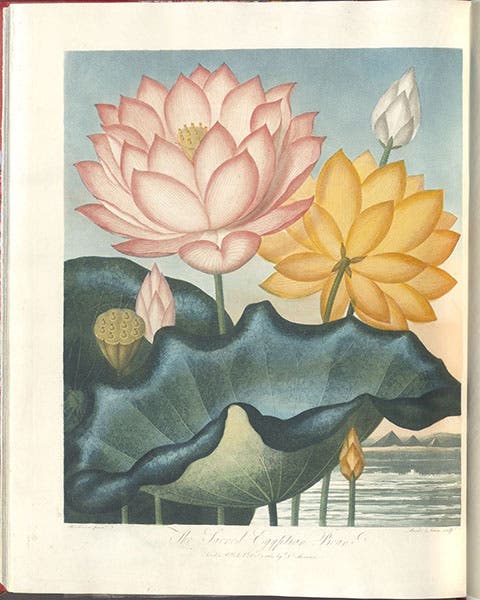Scientist of the Day - Peter Henderson
Peter Henderson, a botanical artist, was one of those who contributed paintings to Robert Thornton's monumental Temple of Flora, published in London in 1807. This is a large folio containing 31-33 plates (copies vary) by an assortment of artists, executed in a combination of line engraving, aquatint, and mezzotint. It is on most of the top-ten lists of the finest floral publications of all time, often at spot no. 1. We wrote a post on Thornton long ago ( 2015), and another, more recently, on one of his artists, Philip Reinagle. We have held off writing about Henderson, hoping we might discover a little something about his life, perhaps a birth or death date to hang a tribute on, and a portrait. But we have learned nothing more about him, and found no portrait. I did discover that he completed his first plate for Thornton on Aug. 1, 1800, so that provides us with an occasion to honor Mr. Henderson today, although we can do little more than show some of his prints, both full-sized and in detail, and wonder about the rest of his life.
Henderson executed 15 paintings for Thornton (or, to state that more precisely, 15 of his paintings were engraved for the book). His very first, the one dated this day in 1800, depicted the White Lily, and I do not include it here, because it is not among his best. His two finest paintings (in my opinion) are the two that we lead off with, The Blue Egyptian Water-Lily, and the Sacred Egyptian Bean, both among the last plates he completed, in 1804. When I wrote the post on Thornton, I showed the Sacred Egyptian Bean as the first image, because I think it is terrific, but I switched up the order here, so I would have a different lead image. We also selected these same two images to illustrate our entry on Thornton in our Darwin bicentennial exhibition of 2009, The Grandeur of Life. For this occasion, we add two close-ups (third and fourth images).
I am not sure how the different flower assignments were meted out by Thornton, but if the artists were allowed to choose their own, then Henderson had a puckish sense of humor. One of his plates shows a Dragon Arum, which not only lacks the beauty of the water lilies and lotuses, but produces an aroma that smells like rotten meat, to attract the attention of the flies that act as pollinators (fifth image). Another plate has the lovely title: The Maggot-bearing Stapelia, which says a lot (sixth image). This plant also attracts flies with its foul odor; the flies then lay their eggs around the coronas of the flowers. We show a detail of this print below – we wouldn't want you to miss the blowflies (seventh image).
I hope someone who knows more than I do about early 19th-century botanical artists will read this post and be moved to tell me all the things I don't know about Henderson, such as what else he did besides paint flowers for Robert Thornton. It would be a pleasure to revise the post in the light of further information.
William B. Ashworth, Jr., Consultant for the History of Science, Linda Hall Library and Associate Professor emeritus, Department of History, University of Missouri-Kansas City. Comments or corrections are welcome; please direct to ashworthw@umkc.edu.













